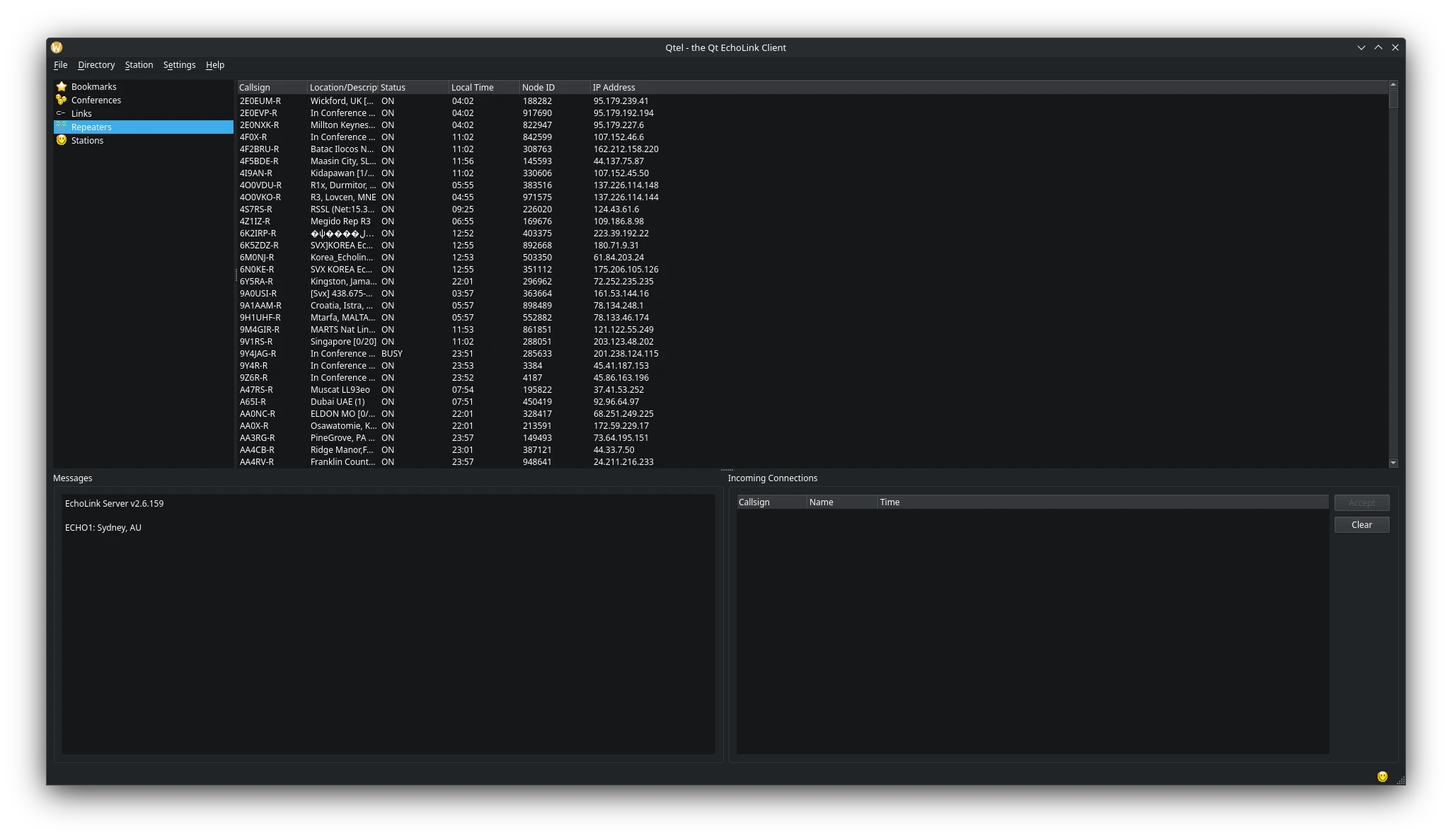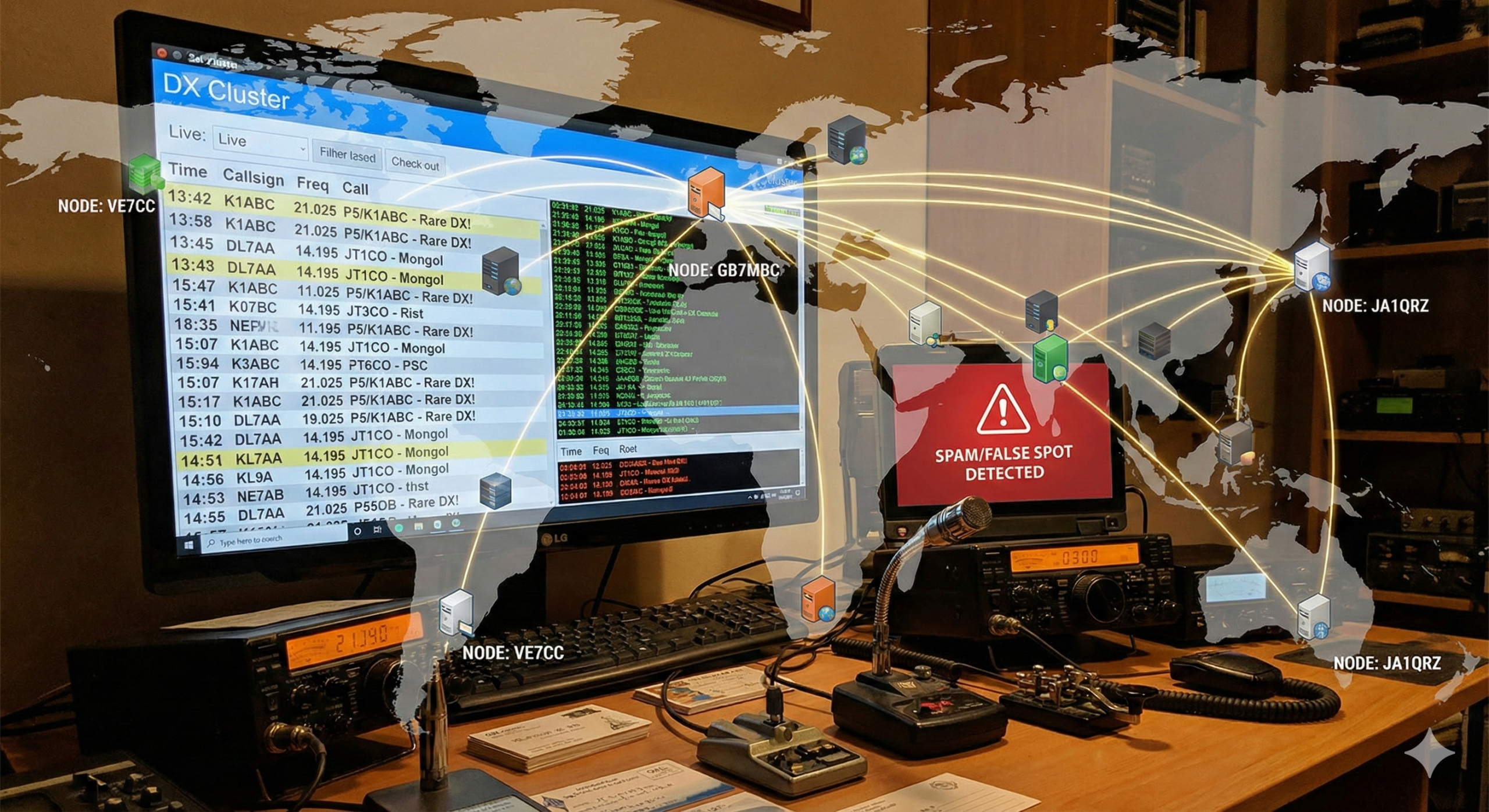Installing Qtel from AUR on Arch Based Linux Using paru or yay
If you’re a licensed ham radio operator exploring digital modes or remote communication, there’s a good chance you’ve heard of EchoLink. It’s one of the easiest ways to connect with other hams worldwide—without needing a transceiver, tower, or even an antenna.
But what if you’re on Arch Linux (or a distro like CachysOS, Manjaro, EndeavourOS, or ArcoLinux)? There’s no official EchoLink client packaged for Arch. Fortunately, thanks to the Arch User Repository (AUR), we now have an actively maintained build of Qtel, the graphical EchoLink client from the SvxLink project.
This guide shows how to install qtel-svxlink-git from the AUR using paru or yay—two of the most popular AUR helpers.
🔊 What is EchoLink?
EchoLink is a system that allows licensed amateur radio operators to connect with each other using the internet as a bridge between radios. It works through:
- 📡 RF nodes (like a repeater or simplex radio with a computer running EchoLink software)
- 🖥️ PC and smartphone clients (for operators who want to connect via the internet)
That means you can:
- Join a repeater in another country
- Talk to someone over RF from your laptop or phone
- Access conference rooms where multiple hams chat together
- Even control a remote station or node
EchoLink is especially useful for:
- Hams in apartment buildings or RF-restricted areas
- Emergency comms backups
- Quick check-ins while traveling
🖥️ What is Qtel?
Qtel is the official graphical EchoLink client that’s part of the SvxLink suite. It supports:
- Direct connections to other EchoLink nodes
- Simple, clean UI for managing connections
- EchoLink directory lookups
- Voice-over-IP through your computer mic/speakers
Unlike the full SvxLink server setup (which supports linking RF radios), Qtel is just the GUI EchoLink client—perfect if you don’t want the full suite.
💿 Installing Qtel on Arch Linux via AUR
There’s no official Arch package for Qtel—but the qtel-svxlink-git AUR package makes it easy to build the latest Qtel client from the official GitHub repo.
✅ Install with paru
paru -S qtel-svxlink-git
This will clone the source, compile it, and install it automatically. You may be asked about optional dependencies or PKGBUILD changes—just follow the prompts.
✅ Install with yay
yay -S qtel-svxlink-git
yayworks very similarly and will guide you through the process with a clean terminal UI.
📦 What You Get
- Only the Qtel client, not the full SvxLink system.
- Pulled and built from the latest code on the official GitHub: sm0svx/svxlink
- Conflicts cleanly with older
qtelorqtel-gitpackages - Installs dependencies like
qt5-base,alsa-lib,libsamplerate,gsm, and others
🚀 Running Qtel
After install, launch it:
qtel
You’ll be greeted with a clean UI where you can:
- Log in with your callsign and EchoLink credentials
- Search the station directory
- Connect to nodes, repeaters, or conferences
- Use your mic/speaker to talk, just like on any EchoLink client
🎛️ Audio Troubleshooting
Having trouble with your mic or audio output?
- Run
pavucontrol(PulseAudio volume control) - Make sure Qtel is using the correct input/output devices
- Try switching from PulseAudio to PipeWire or ALSA if needed
🗣️ Final Thoughts
EchoLink is a great bridge between the analog world of amateur radio and the digital world of the internet. Whether you’re on the go or stuck in a noisy apartment block with no antenna, Qtel gives you a clean and simple way to connect with hams worldwide.
Now that Qtel is available via the AUR as qtel-svxlink-git, it’s never been easier for Arch Linux users to get on the EchoLink network.







Post Comment